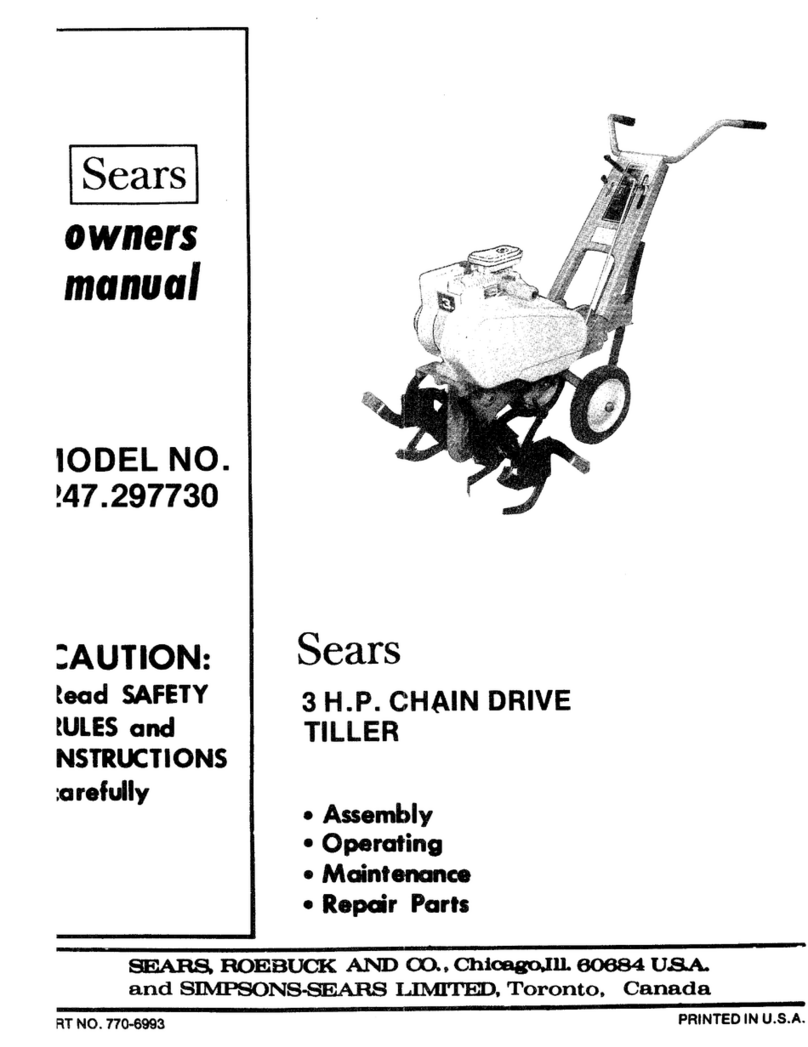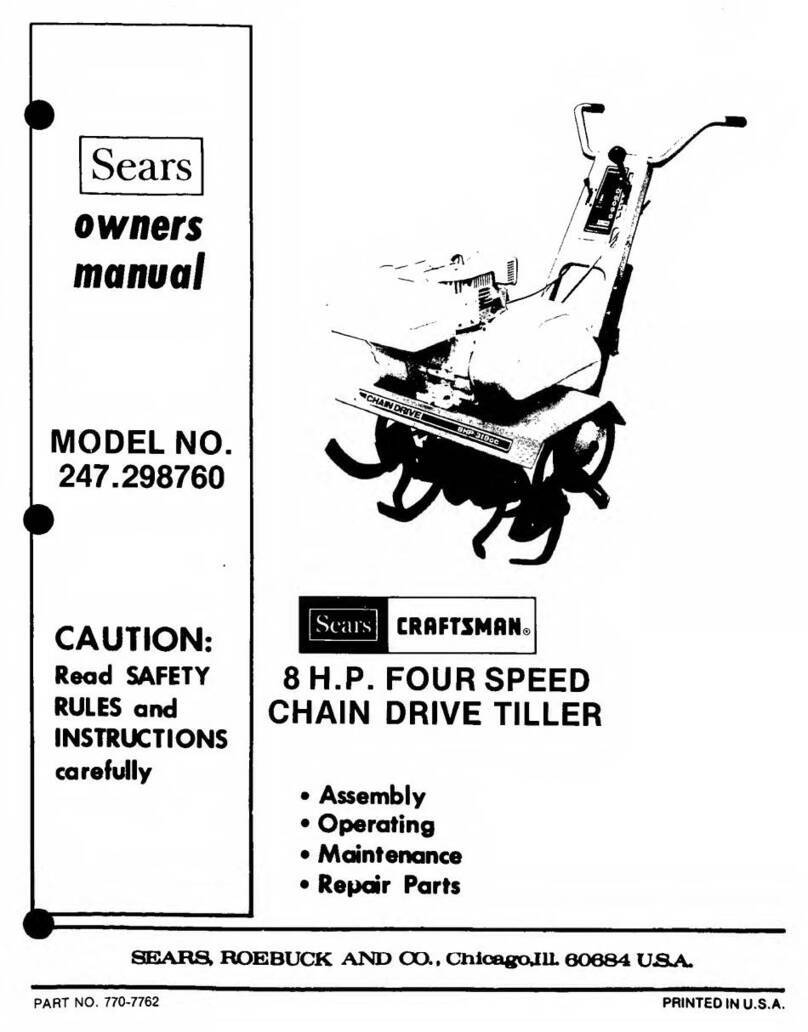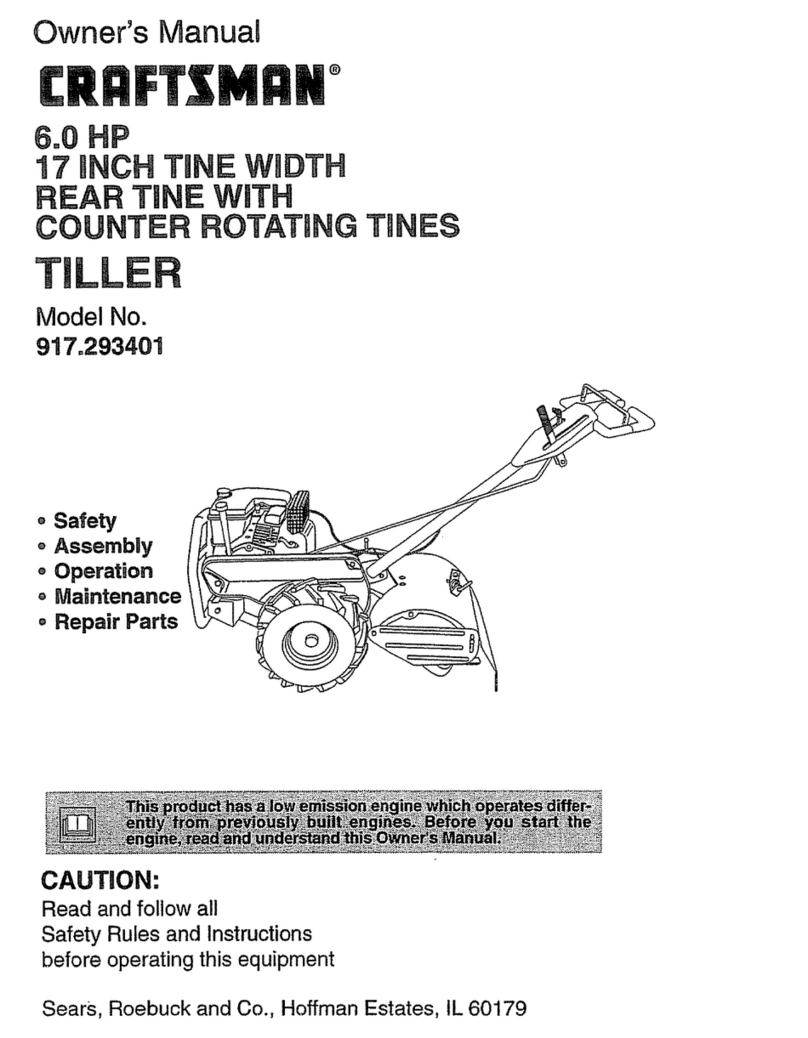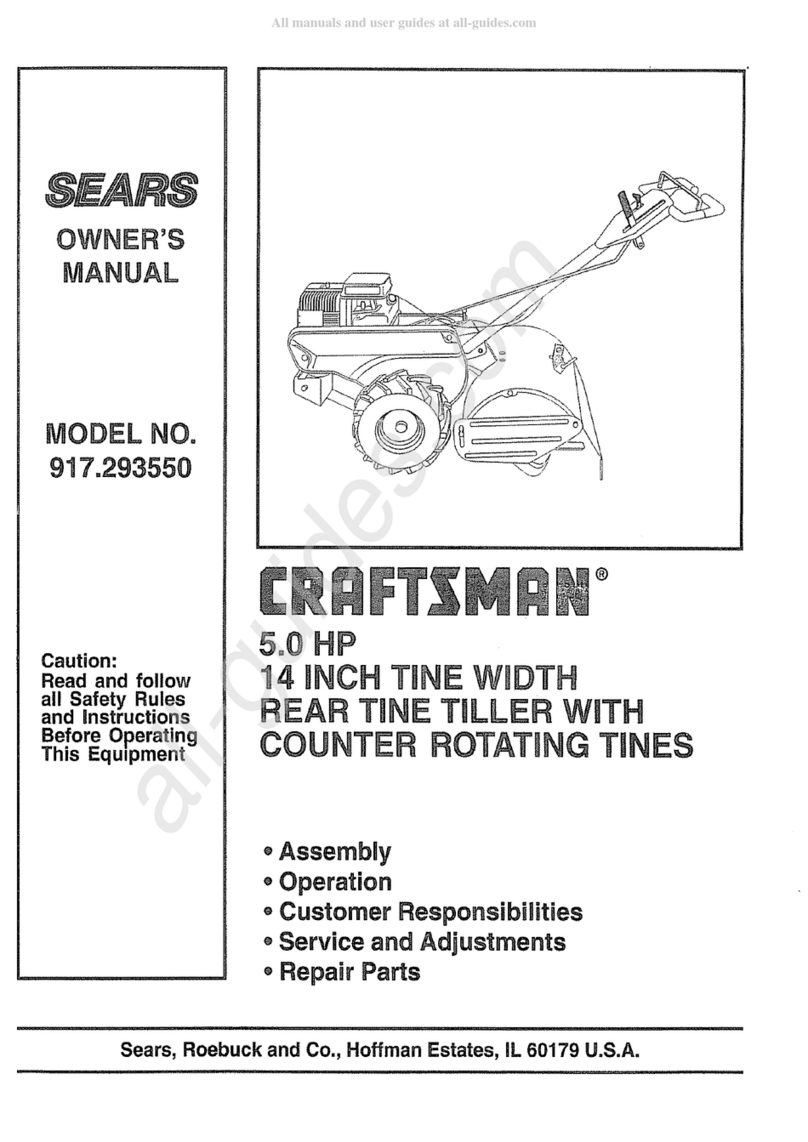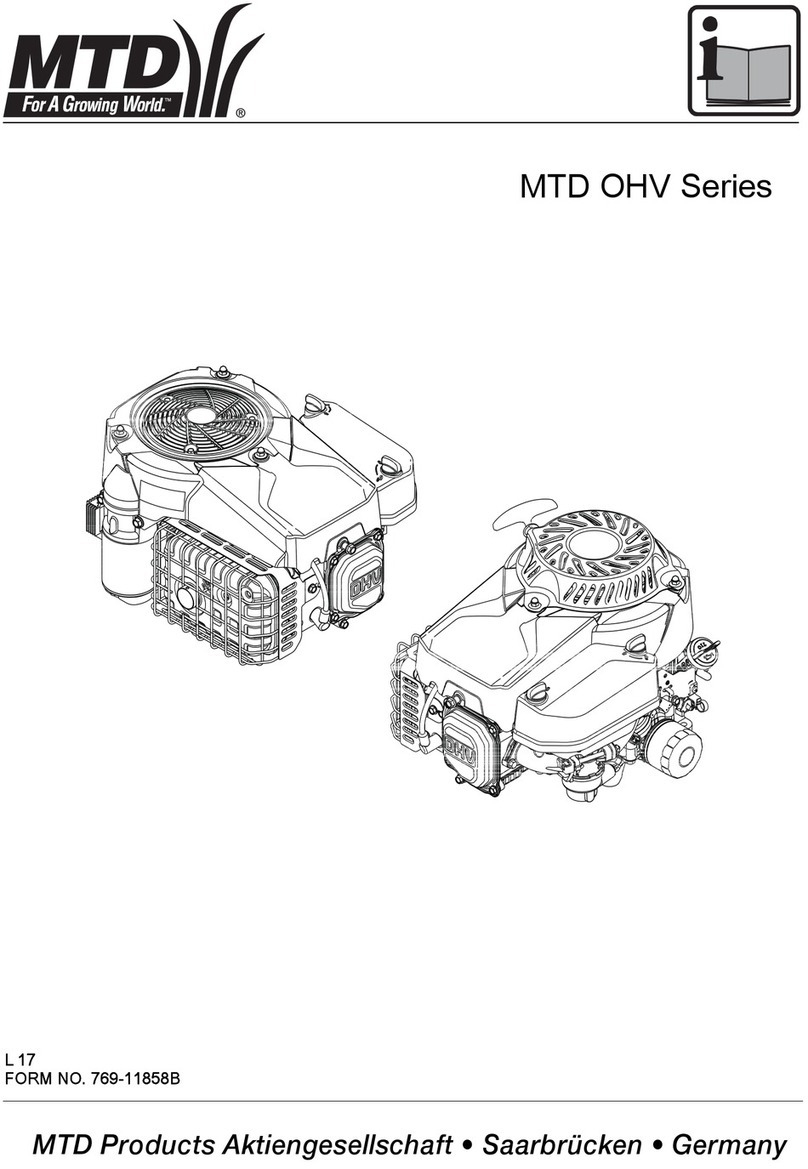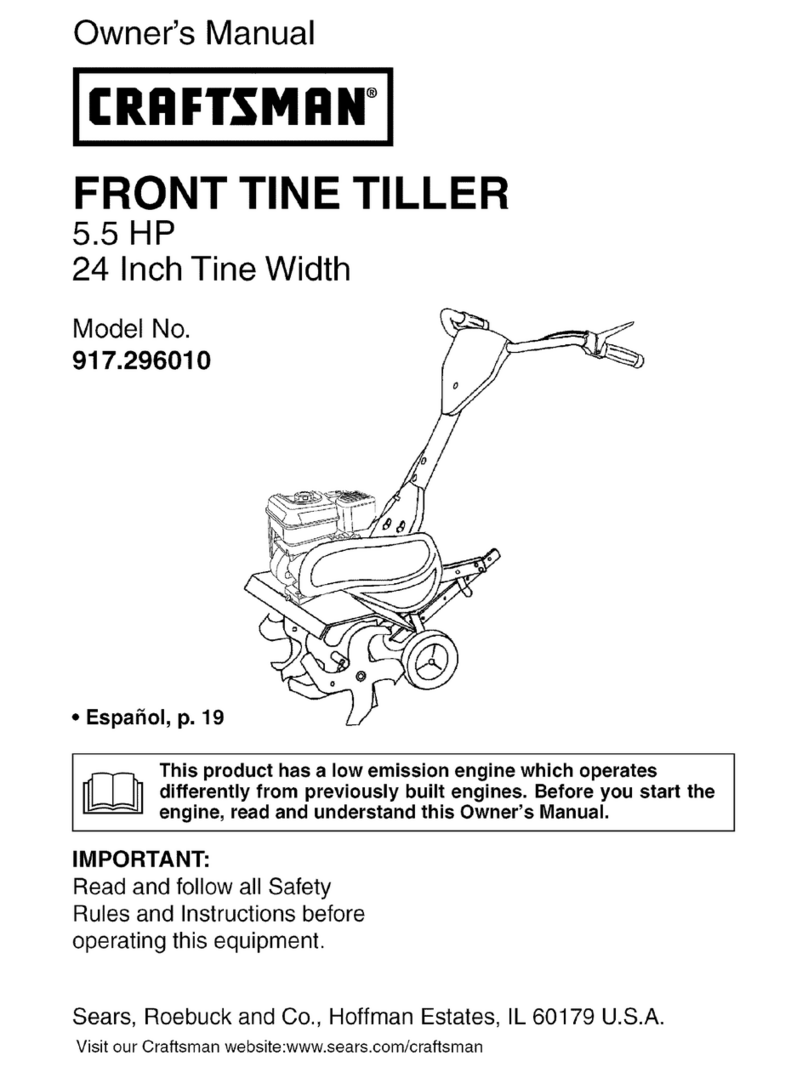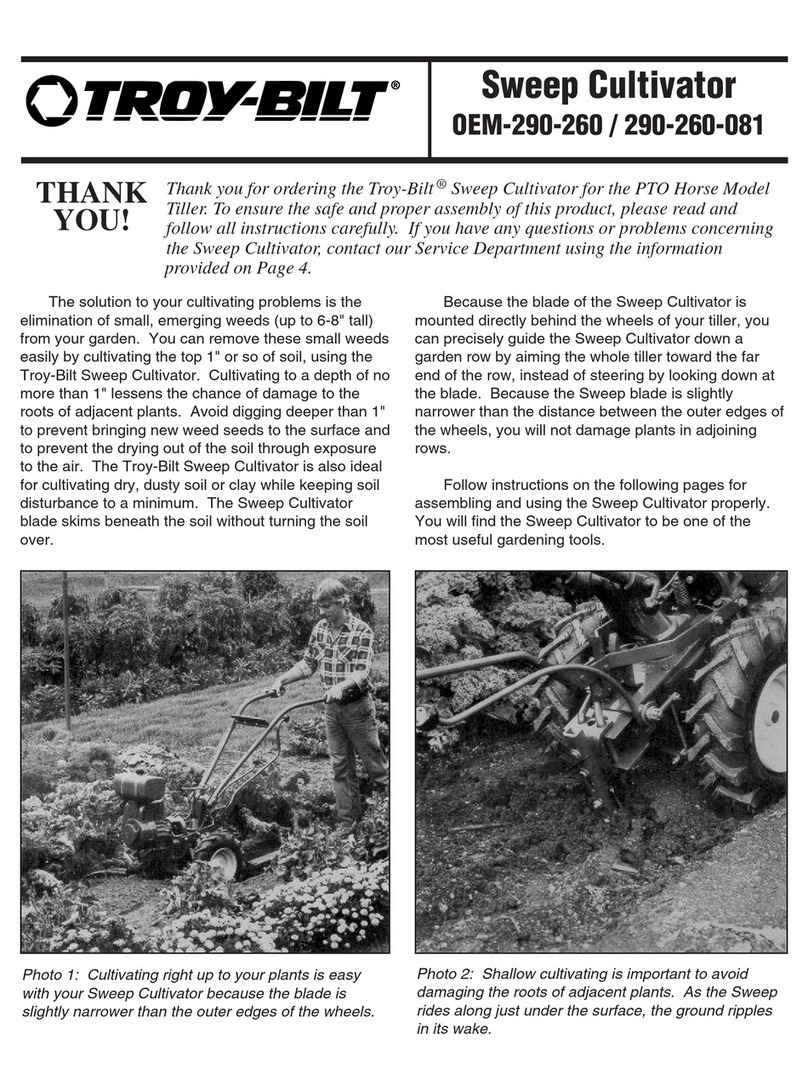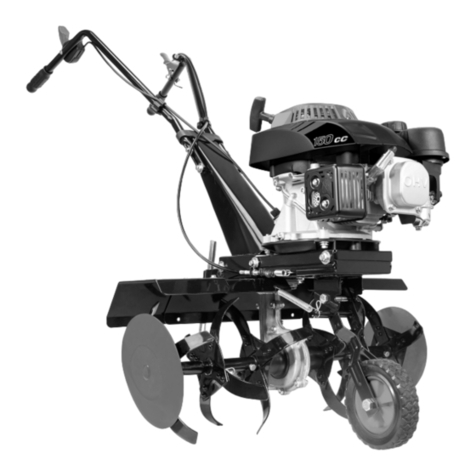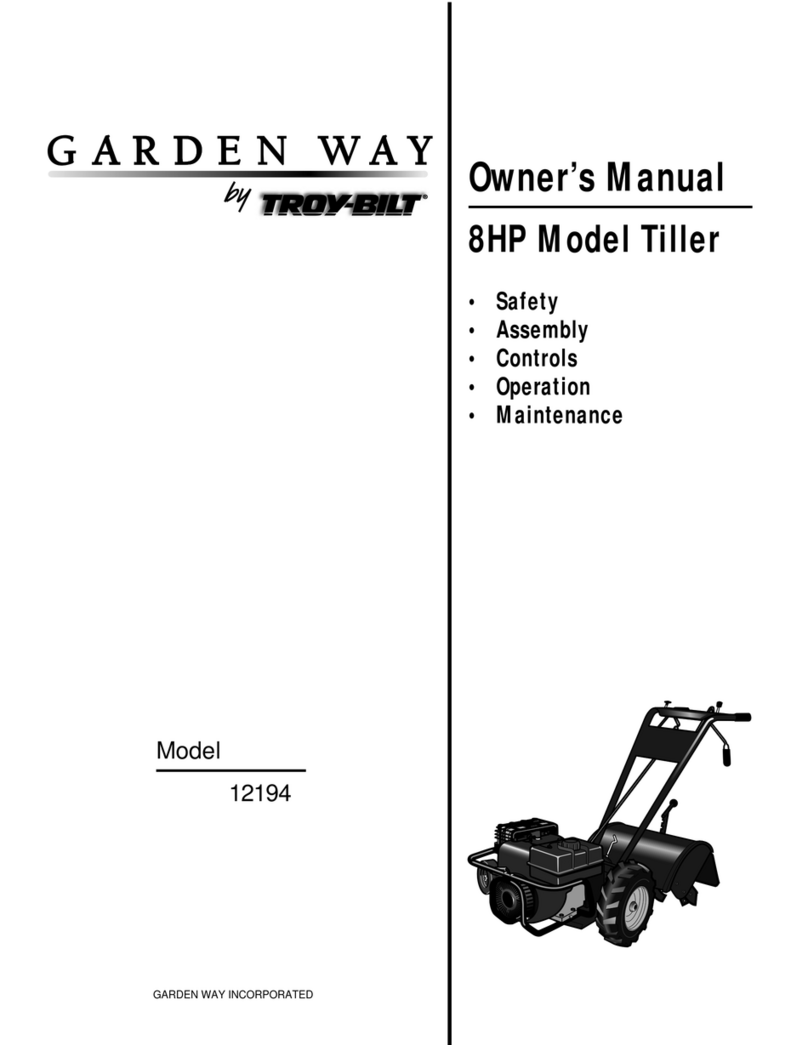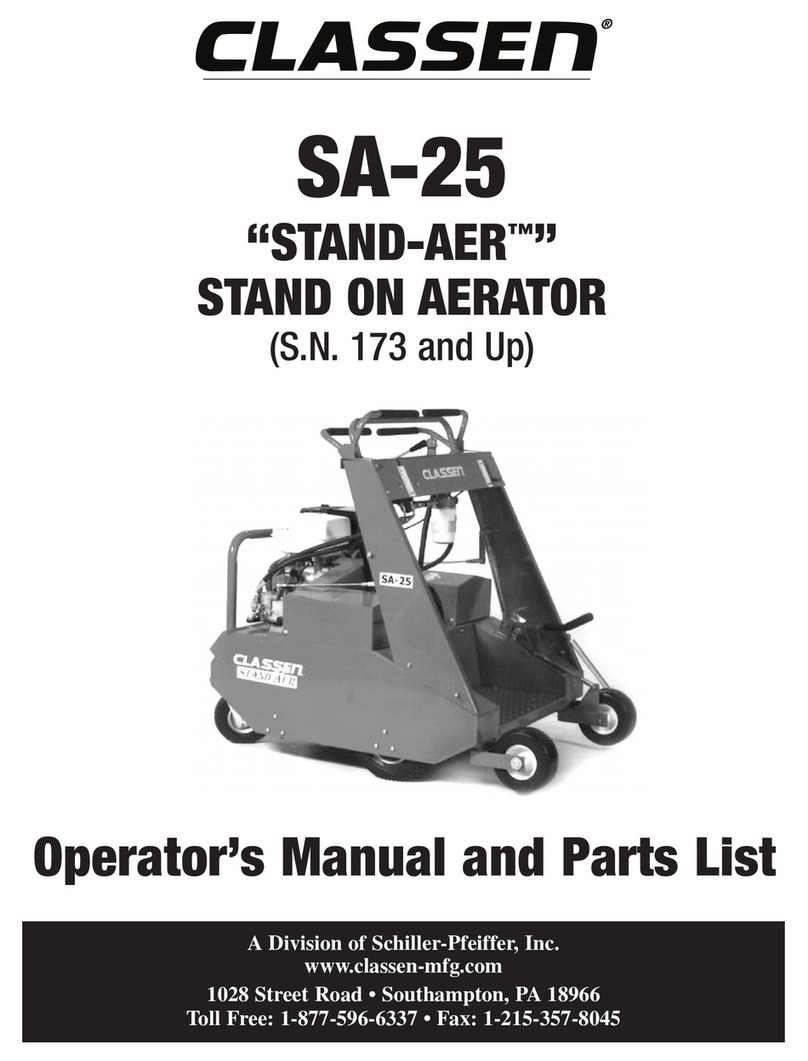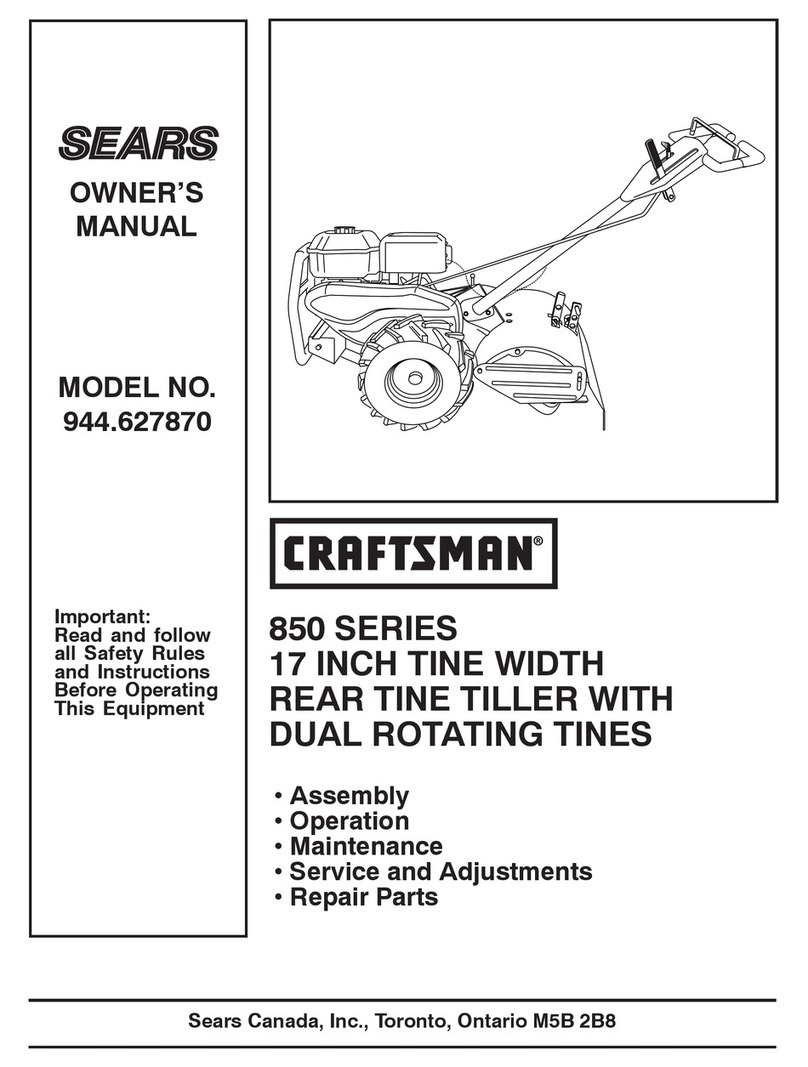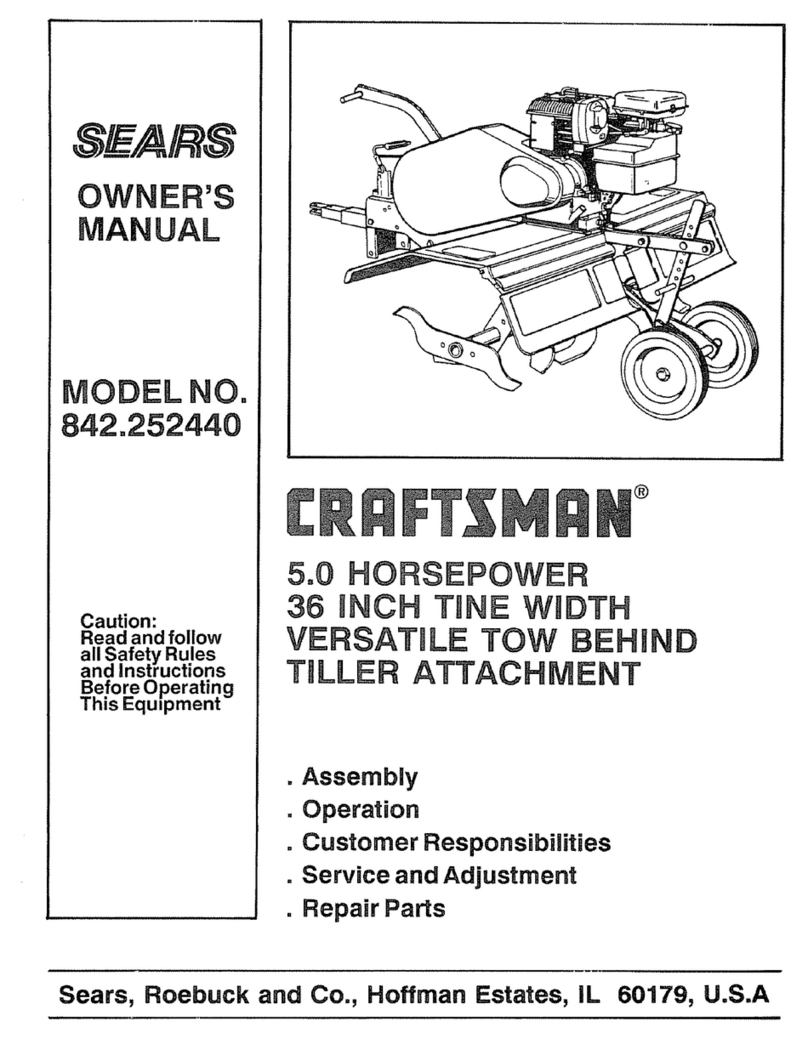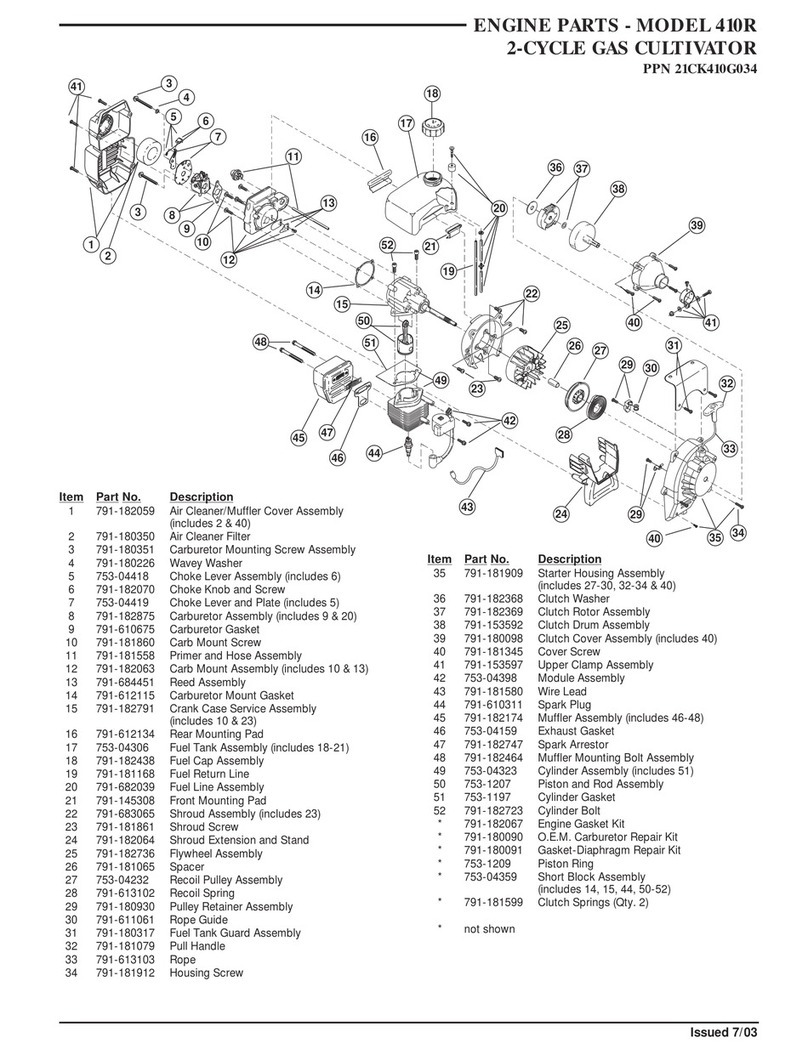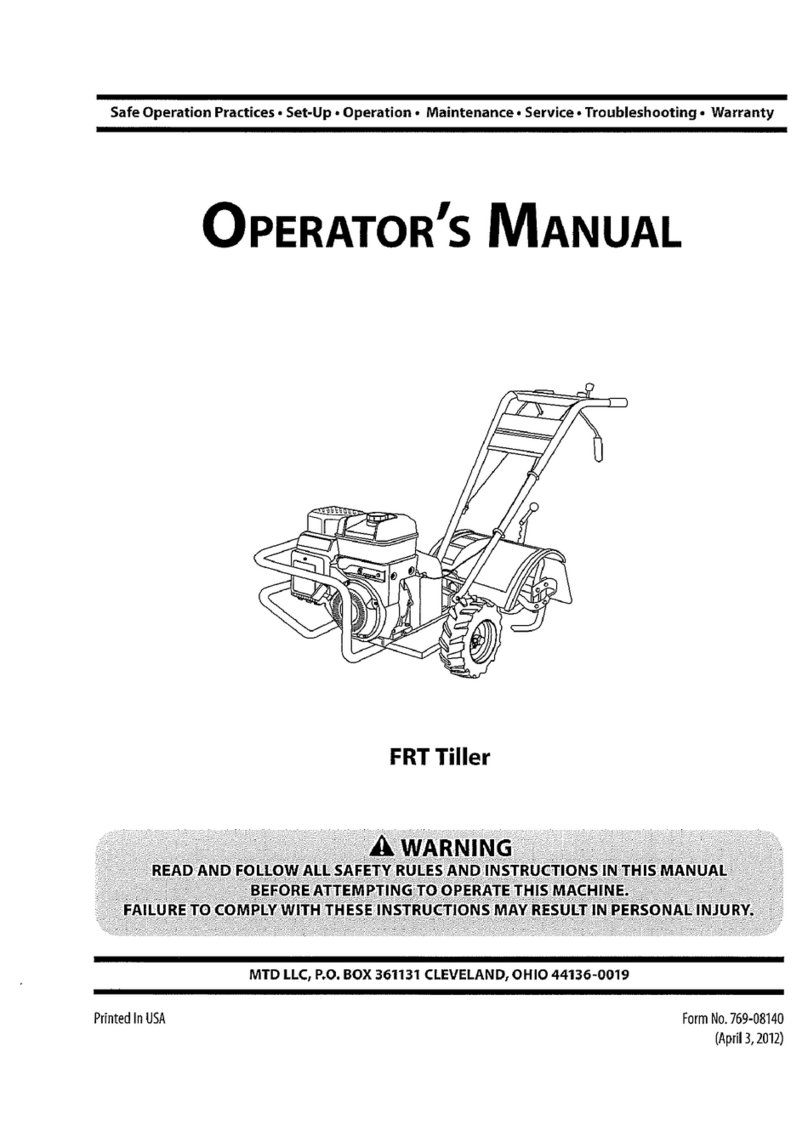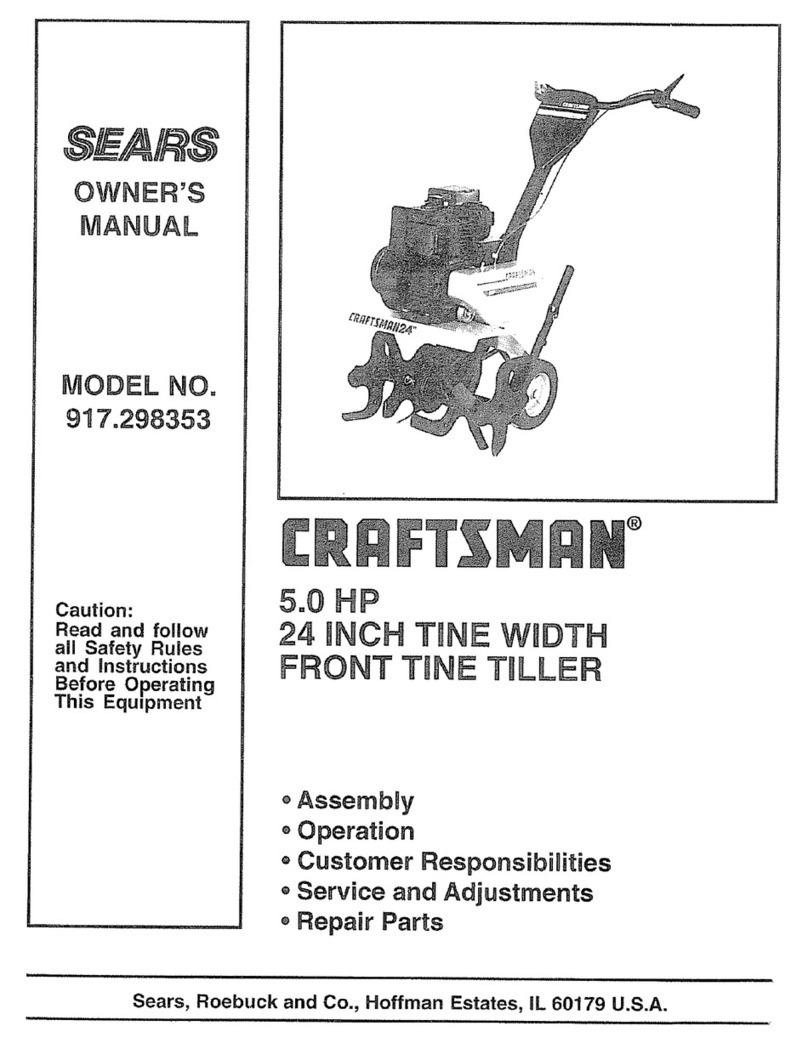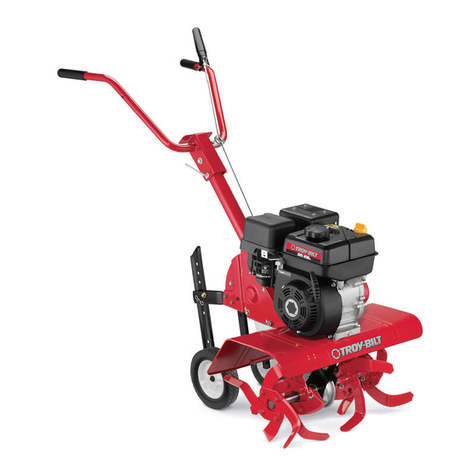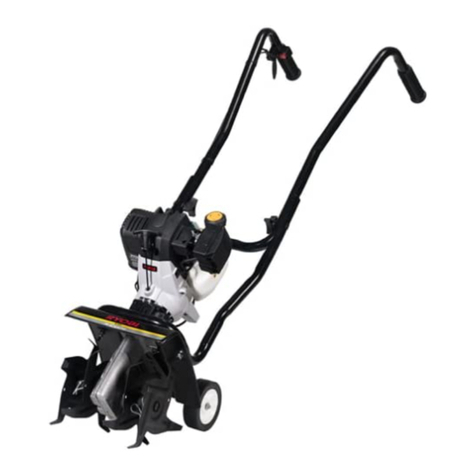ill iiii ii iiii ii
LIiiiiiilll,ll,,l••;•• • ••• _ illii
TABLE OF CONTENTS
ill iiilll iiiill,,i i iiiilll,llllll
SAFETY RULES ............................................................ 2
CUSTOMER RESPONSIBILITIES ...................... 3,13-15
PRODUCT SPECIFICATIONS ....................................... 3
WARRANT'/ ................................................................... 3
ACCESSORIES, ........................................................... 5
ASSEMBLY ................................................................ 6-8
OPERATION .......................................................... ..9-12
INDEX
MAINTENANCE SCHEDULE ...................................... 13
SERVICE & ADJUSTMENTS ................................. 15-18
STORAGE ..,................................................................. 19
TROUBLESHOOTING ;................................................ 20
REPAIR PARTS-TILLER ........................................ 21-26
REPAIR PARTS-ENGINE ....................................... 27-31
AEngine (cont'd)
.... _ Lubrication _.............................. 14
Accessories ....................... ............... 5
..... Oil Level ................................... 11
Adjustments: Oil Type .............................. 11 14
Carburetor ............................... 18 Spark Plug ............................... 15
Depth Stake .............................. 10 Starting. ................................... 12
Handle Height ...:.........: ........:..:15 .... Stopping .i................................ 10
Side Shields ............................. 11 Storage :................................... 19
Throttle .................................... 18 Winter Operation ..................... 14
:Tines ................................... _:_...17 .....
V-Belt (Ground Drive) .............. 16 .....
Air Cleaner .......... _.................... 14 _F
Fuel: .....
BFillingTank .............................. 11
Storage .................................... 19
Belt: Type ......................................... 11
R
Repair Parts:
Tiller .................................... 21-26
Engine ................................ 27-31
Rules for Safe Operation .................. 2
:S
Service & Adjustments:
Carburetor ............................... 18
Handle Height .......................... 15
Side Shields ............................. 11
Throttle .................................... 18
Tines ........................................ 17
V-Belt (Ground Drive) .............. 16
Wheels ..................................... 15
Belt Guard ............................... 16
Repair Parts ............................. 22
V-Be t (Ground Drive) .............. 16
Cooling System .............................. 14
Controls:
Choke ........................................ 9
Throttle ...................................... 9
Drive (Tines) .............................. 9
Cultivating. ..................................... 12
Customer Responsibilities:
Air Cleaner ............................... 14
Cooling System ....................... 14
Finish ....................................... 15
Maintenance Schedule ............ t3
Muffler .,..L.,..:..I:..._ ................. 15
Oil Change .......... :.................... 14
Spark Plug ............................... 15
TEnes........................................ 17
Transmission...; ....................... 15
V-Belt (Ground Drive) .............. 16
D
Finish: ^.
- _ervlce"
Ma ntenance ............................ 15 -.
:: _ : ..... Repair Parts ....................... 21-31
.......... _, ........ Sei_ice Record ........................ 13
n
Handle:
Height Adjustment.................. 115
Repair Parts ............................. 21
Shear Pins:
Operation .................... i............ 12
Repair Parts ............................. 26
Spark Plug:
LGap ............................................ 3
Lubrication: Maintenance ............................ 15
Storage:
Lubrication Chart .................... 13 Fuel System ............................. 19
Engine .................................. 14 Tiller._: ..................................... 19
M T
Muffler: Tilling ......................................... 10,12
Maintenance 15 Tines: i
Spark Arrester ........................... 3 Arrangement/Replacement ...... 17
Operation ................................. 10
Repair Parts ............................. 26
Shiraz:Pins ............................... 12
Transmission:
Maintenance ............................ 15
Repair Parts ............................. 24
O
Oil: Level ........................................ 11
Type .................................... t1,14
Operation:
Depth Stake: Cultivatin_l ................................ 12 Troubleshooting .........:................... 20
Adjustment ............................... 10 Fill Fuel "l_'ank........................... 11
Repair Parts ............................. 25 Starting Engine _....................... 12 Transporting ................................... 11
:: _:_Stopping Tines & Engine ......... 10
• : E_ ..... Tilling ...:.,...:..: ......................... 10 i :: .... i: W:
En;'ine" Tilling Hints .............................. 12 Warranty ............ ""i ............... :....""..3
_-" "-' 14 Tine Operation ............. 10
AsrL;teaner................................. "........... 1 Wheels: :
Coolinn System 14 Transporting T,Iler.................... 1
"....................... 11 :Winter Operation .... 14 Removal. ................................. 15
FueIType ............,.,,... .......... ........ : i :ii: ..... : T"!'=,'",":"" ..... Repair Parts............................. 23
: i
4

